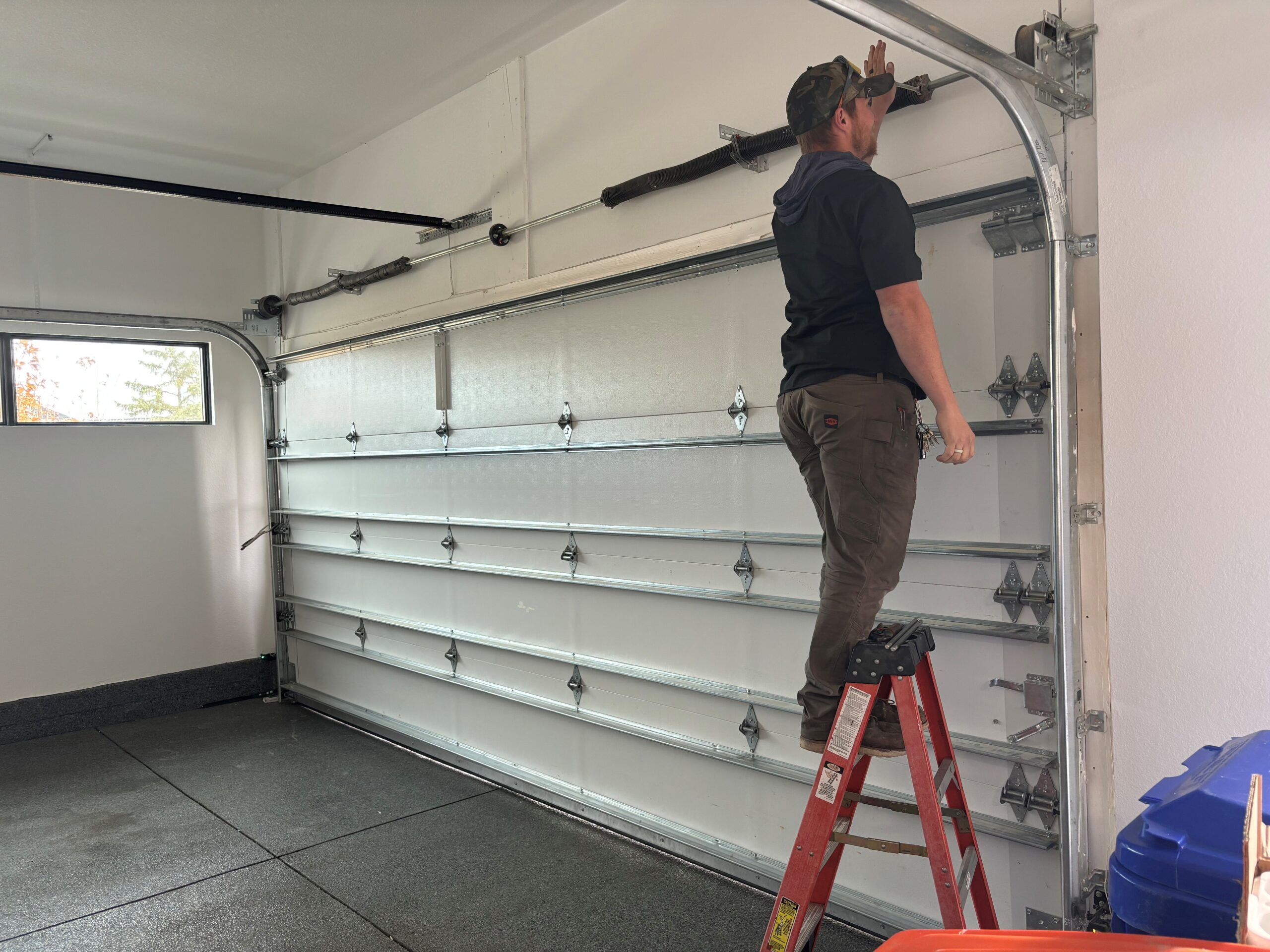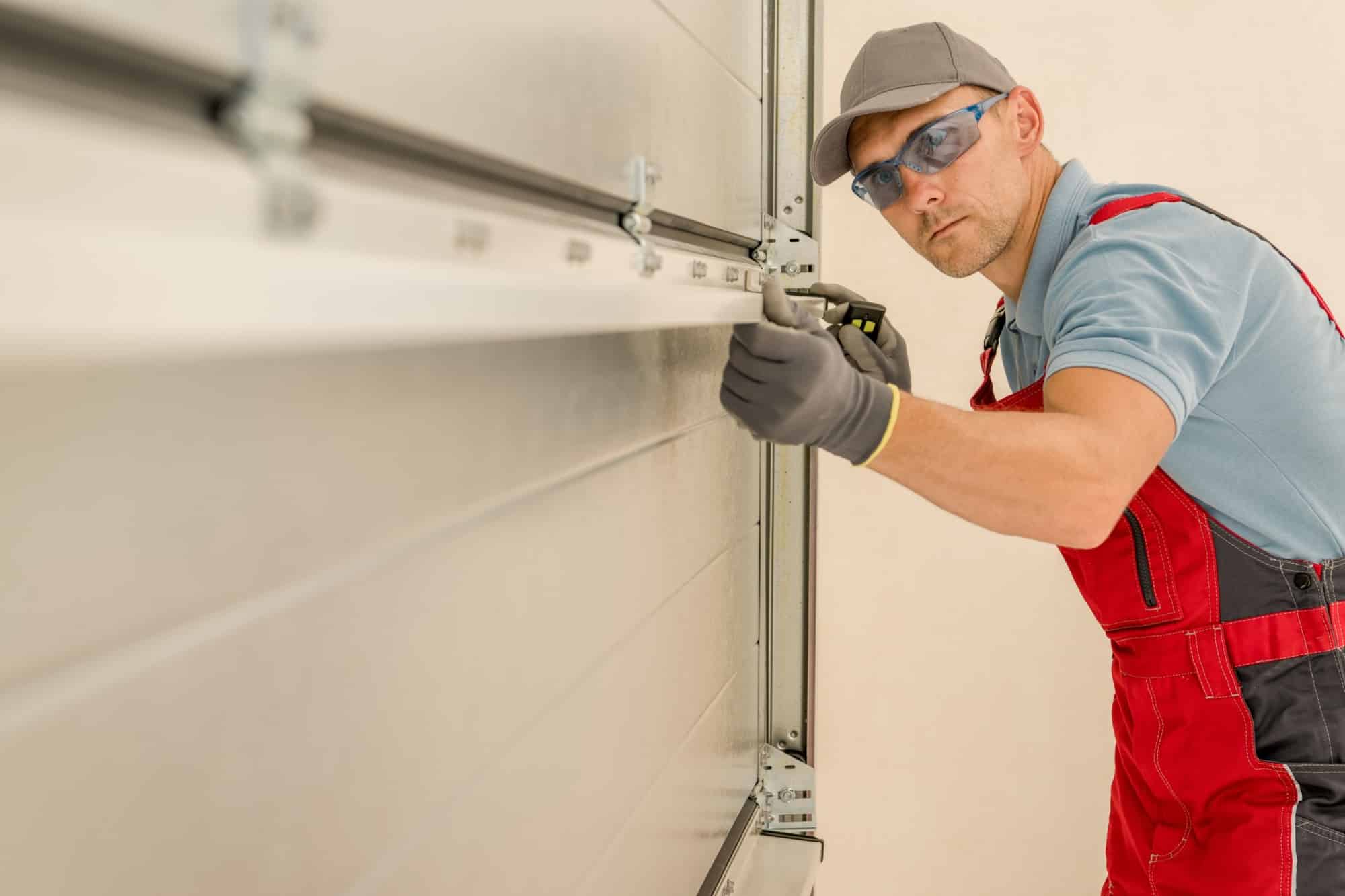Usual Troubles and Solutions for Homeowners With Garage Doors
As a house owner, you may deal with several common garage door concerns that can disrupt your daily routine. Let's explore the most constant garage door troubles and how you can tackle them successfully.
Malfunctioning Garage Door Openers
When your garage door opener begins acting up, it can be discouraging, particularly if you count on it daily. You might discover that it does not react to your remote or the door opens and closes erratically. First, check the batteries in your remote; weak batteries can create intermittent concerns. If that's not the problem, examine the opener's source of power. Validate it's plugged in and the breaker hasn't tripped. Often, a stuck or filthy antenna can disrupt signal reception, so provide it a fast clean.
Don't be reluctant to consult your user handbook for fixing suggestions particular to your version, or consider calling an expert if the problem persists. Taking these actions can help recover your garage door's capability in no time.
Misaligned Garage Door Tracks
If your garage door isn't opening or closing efficiently, misaligned tracks may be the culprit. Typical causes include deterioration or unintended bumps that interfere with the placement. The good news is, fixing these track concerns can recover your door's function and maintain it running safely.
Sources Of Imbalance
Misalignment of garage door tracks can happen for numerous reasons, frequently leading to aggravating operational issues. If your garage door obtains bumped or struck, that influence can misalign the tracks. Determining these reasons can aid you recognize why your garage door isn't working smoothly.
Fixing Track Problems
Taking care of track issues with misaligned garage doors calls for a careful strategy to ensure smooth operation. Examine the tracks for bends or debris that could block motion. Make use of a degree to check if the tracks are straight; otherwise, gently tap them back right into positioning with a rubber club. Next, validate the braces holding the tracks are limited; loosened screws can trigger misalignment. If the tracks are considerably damaged, think about changing them. As soon as lined up, lubricate the tracks with a silicone-based spray to reduce rubbing. Ultimately, test the garage door's operation to validate it opens up and closes smoothly. Normal maintenance will assist protect against future track issues and maintain your garage door functioning effectively.
Broken Springs
When your garage door suddenly refuses to open up or shut, it's often because of broken springs. These springs birth the weight of the door, making it very easy for you to raise or decrease it. If they break, you'll discover that your door feels heavy or won't budge whatsoever.
To verify the concern, aesthetically inspect the springtimes for gaps or breaks. If you think they're broken, don't try to repair them on your own, as they're under high stress and can trigger injury. Rather, call an expert that can securely change the springtimes.
Regular maintenance can aid avoid spring failing, so maintain an eye on their condition and oil them occasionally. If you're experiencing regular springtime troubles, consider upgrading to higher-quality springs that can stand up to even more wear and tear. This positive approach can save you money and time in the future, ensuring your garage door operates smoothly.
Noisy Garage Doors
After dealing with concerns like damaged springs, you could observe one more common trouble: loud garage doors. If your garage door squeals, rattles, or groans, it can be rather irritating, specifically if it's interrupting your peace. The sound frequently originates from worn-out rollers, loose equipment, or lack of lubrication.
If they're unclean or damaged, cleaning up or changing them can significantly minimize sound. Do not forget to lube the moving parts with a silicone-based spray or garage door lubricant.
If your door still sounds like a dinosaur, consider seeking advice from an expert. Normal upkeep can protect against noisy garage doors and extend their life-span, guaranteeing you appreciate a quieter, check my reference smoother procedure.
Garage Door Remote Issues
Many homeowners experience disappointment with garage door remote problems at some point. If your remote isn't functioning, the initial step is to examine the batteries. Weak or dead batteries are commonly the culprits. Replace them and see if that resolves the problem. If the remote still will not operate, try reprogramming it. Consult your garage door opener handbook for particular directions.
Often, disturbance from various other electronics can affect your remote. Look for any close-by devices that may be triggering a signal disturbance. If that does not assist, inspect the remote for physical damage, like cracks or busted buttons.
Another common concern is distance; you might simply be too much from the garage door. They can diagnose and deal with any underlying troubles with your garage door system.
Climate Stripping Problems
If you see drafts, water leakages, or enhanced power costs, your garage door's weather removing could be worn. Comprehending how to detect signs of wear and recognizing setup pointers can assist you keep a proper seal - garage doors nanaimo. When it's time for a substitute, you'll have a lot of options to select from
Indicators of Wear
As you use your garage door with time, the weather condition removing can start to show indicators of wear, which is important to attend to. Seek gaps or splits in the rubber or plastic product; these can allow in drafts, dust, and dampness. If you observe the stripping is fragile or tearing away from the door, it's time to do something about it. You may additionally discover that your garage door does not secure appropriately, bring about enhanced power prices or bug troubles. Frequently evaluate the climate stripping to capture these concerns early. If you see significant damages, replacing the weather stripping can aid maintain your garage's performance and safeguard your possessions from the elements. Do not disregard these signs-- act immediately!
Setup Tips
When you discover use on your garage door's weather removing, attending to the installation can make a significant difference. First, validate you have the best type of climate stripping for your garage door. Measure the door properly to cut the removing to the proper length. Clean the surface where you'll use the climate removing, eliminating any type of dirt or particles to ensure a solid bond. Utilize a high-grade sticky or comply with the maker's instructions for installment. Make certain it's straightened properly to seal gaps properly. On a regular basis check the installation for any type of indications of damages or detachment. By taking note of these details, you'll boost your garage door's insulation and secure your home from the aspects.
Substitute Options
While you may have installed your garage door's weather condition removing correctly, wear and tear can still lead to troubles that demand replacement. Procedure your door's measurements properly to guarantee an appropriate fit, and choose self-adhesive strips for easy installation. Frequently inspecting and replacing weather stripping not only boosts your garage's energy effectiveness yet additionally secures it from damages.
Sensor Malfunctions

Start by inspecting the sensing unit placement. Make sure both sensing units deal with each other and are degree.
If the sensors appear undamaged yet the door still won't close, it may be time to replace them. You can find compatible sensing units at your local equipment store. Simply keep in mind to follow the manufacturer's guidelines for installment. With a little troubleshooting, you can usually fix sensor concerns and get your garage door working smoothly once again.
Often Asked Inquiries
How Commonly Should I Keep My Garage Door System?
You should maintain your garage door system at the very least two times a year. Routine checks for wear, lubrication of moving components, and readjusting the tracks can maintain it functioning smoothly and prolong its lifespan significantly.
Can I Install a Garage Door Myself?
Yes, you can mount a garage door yourself, but it calls for careful preparation and the right devices. Make certain you follow the manufacturer's directions very closely and take into consideration security preventative measures to prevent crashes during installation.
What Is the Average Life Expectancy of a Garage Door?
The standard life expectancy of a garage door is generally 15 to 30 years, depending on materials and maintenance. If you look after it well, you can maximize its long life and take pleasure in trusted performance.

Just how Do I Pick the Right Garage Door?
When you choose the best garage door, consider products, style, and insulation. Consider your home's design, spending plan, and upkeep needs. Do not forget to inspect neighborhood policies and energy effectiveness scores for ideal efficiency.
Exist Energy-Efficient Garage Door Options Available?
Yes, there are energy-efficient garage door options readily available. You can pick insulated doors, which help keep your garage's temperature, or search for designs with a high R-value to enhance energy effectiveness and minimize energy costs.